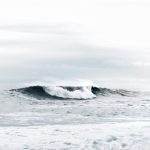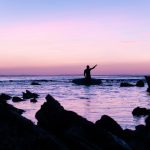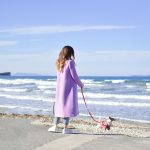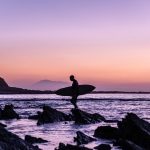Riding the Waves: The Thrill of Ph630 Surfing
Description
The history of Ph630 surfing is deeply intertwined with the rich cultural tapestry of the Philippines, a nation composed of over 7,000 islands, each offering unique waves and surf experiences. Surfing in the Philippines can be traced back to the early 1970s when local surfers began to embrace the sport, inspired by international surf culture. The arrival of foreign surfers, particularly from the United States and Australia, played a pivotal role in popularizing surfing in the archipelago.
These early pioneers discovered the pristine beaches and powerful swells that the Philippines had to offer, leading to the establishment of a vibrant surf community. As the sport gained traction, local surfers began to develop their own styles and techniques, blending traditional Filipino water sports with modern surfing practices. The introduction of surf competitions in the late 1980s further fueled interest in the sport, showcasing local talent and attracting international attention.
Notable surf spots like Siargao, La Union, and Baler became synonymous with quality waves and a burgeoning surf culture. Over the decades, surfing has evolved from a niche activity into a mainstream sport in the Philippines, with an increasing number of surf schools, competitions, and festivals celebrating this exhilarating pastime.
Key Takeaways
- Surfing in the Philippines has a rich history dating back to the 1970s, with the sport gaining popularity in the country’s coastal regions.
- Some of the best surfing spots in the Philippines include Siargao, Baler, La Union, and Zambales, offering a variety of waves suitable for all skill levels.
- Essential gear for surfing in the Philippines includes a surfboard, leash, wax, rash guard, and sunscreen to protect against the sun and sea conditions.
- Beginners can get started with surfing in the Philippines by taking lessons from experienced instructors, practicing proper paddling techniques, and learning how to read and catch waves.
- Surfing in the Philippines offers numerous health benefits, including improved cardiovascular fitness, muscle strength, and mental well-being from being in nature and the water.
- To surf responsibly in the Philippines, surfers should respect local customs and traditions, minimize their environmental impact, and support sustainable tourism initiatives in coastal communities.
The Best Surfing Spots in the Philippines
Siargao Island: The Surfing Capital
Siargao Island is one of the most renowned surfing locations in the Philippines, often referred to as the surfing capital of the country. Cloud 9, a legendary surf break on Siargao, is famous for its powerful right-hand reef break that attracts both local and international surfers. The wave’s hollow barrels and consistent swells make it a must-visit destination for experienced surfers seeking a challenge.
La Union: A Vibrant Surf Community
La Union, located on the northern coast of Luzon, is another gem in the Philippine surfing landscape. Known for its consistent waves and vibrant surf community, La Union has become a popular weekend getaway for both locals and tourists. The beach breaks at San Juan offer a variety of waves suitable for beginners and intermediates, while more advanced surfers can explore nearby spots like Urbiztondo and Bacnotan.
Baler: A Historic Surfing Town
Baler, a historic town on the eastern coast of Luzon, is also a significant player in the Philippine surfing scene.
The beach breaks at Sabang Beach provide excellent conditions for beginners, while more experienced surfers can venture to spots like Cemento Beach and Charlie’s Point for more challenging waves. Baler’s rich history and stunning landscapes add to its allure as a surfing destination.
The Essential Gear for Ph630 Surfing

When it comes to Ph630 surfing, having the right gear is crucial for both performance and safety. A quality surfboard tailored to your skill level and the type of waves you’ll be riding is essential. Beginners often start with a soft-top longboard, which provides stability and buoyancy, making it easier to catch waves.
As surfers progress, they may transition to shortboards or fish boards that offer greater maneuverability and speed. It’s important to choose a board that suits your style and the specific conditions of your chosen surf spot. In addition to a surfboard, other essential gear includes a wetsuit or rash guard, depending on the water temperature.
While many areas in the Philippines have warm waters year-round, certain regions may require additional thermal protection during cooler months or early morning sessions. A wetsuit not only keeps you warm but also protects your skin from sun exposure and potential abrasions from the board or reef. Furthermore, investing in a good pair of surf booties can provide extra grip and protection when navigating rocky areas or coral reefs.
Safety equipment should not be overlooked either. A leash is vital for keeping your board attached to you while surfing, preventing it from becoming a hazard to others in the water. Additionally, wearing sunscreen with high SPF is crucial to protect against harmful UV rays, especially during long hours spent under the sun.
Finally, having a first aid kit on hand can be beneficial for addressing minor injuries or accidents that may occur while enjoying your time in the water.
Tips for Beginners: How to Get Started with Ph630 Surfing
| Tip | Description |
|---|---|
| 1 | Choose the right surfboard for beginners |
| 2 | Learn about ocean safety and surf etiquette |
| 3 | Practice paddling and popping up on the board |
| 4 | Start with small waves and gradually progress to larger ones |
| 5 | Take lessons from a qualified instructor |
For those eager to dive into Ph630 surfing, starting with proper instruction is key to building a solid foundation. Enrolling in a surf school or taking lessons from experienced instructors can significantly accelerate your learning curve. These professionals can teach you essential techniques such as paddling, popping up on your board, and reading waves.
They also provide valuable insights into ocean safety and etiquette, which are crucial for any beginner surfer. Once you’ve received some instruction, practice is essential for honing your skills. Begin by choosing smaller waves that are more manageable for beginners; this will help you build confidence without feeling overwhelmed.
Focus on mastering your balance and paddling technique before attempting to catch waves consistently. It’s also beneficial to spend time observing other surfers; watching how they position themselves and navigate waves can provide practical insights that enhance your understanding of surfing dynamics. Additionally, developing physical fitness can greatly improve your surfing abilities.
Engaging in exercises that strengthen your core, arms, and legs will enhance your paddling power and stability on the board. Activities such as swimming, yoga, or even skateboarding can complement your surfing practice by improving your overall balance and flexibility. Remember that patience is key; progress may take time, but with dedication and practice, you’ll find yourself riding waves with increasing confidence.
The Health Benefits of Ph630 Surfing
Surfing offers a multitude of health benefits that extend beyond just physical fitness; it also promotes mental well-being and social connections. Physically, surfing is an excellent full-body workout that engages various muscle groups. Paddling out requires upper body strength while riding waves engages core muscles for balance and stability.
Additionally, standing on a board improves leg strength and coordination. Regular surfing sessions can enhance cardiovascular health by providing an aerobic workout that boosts endurance. Beyond physical fitness, surfing has profound mental health benefits as well.
The act of riding waves fosters mindfulness as surfers immerse themselves in the present moment while navigating the ocean’s rhythm.
Furthermore, being part of a surf community fosters social connections that can enhance emotional well-being; sharing experiences with fellow surfers creates bonds that contribute to a sense of belonging.
Moreover, exposure to sunlight while surfing helps boost vitamin D levels in the body, which is essential for bone health and immune function. The combination of physical activity, social interaction, and time spent outdoors makes surfing an ideal activity for promoting overall health and wellness.
Environmental Impact: How to Surf Responsibly in the Philippines

Combating Ocean Pollution
One significant concern is ocean pollution; plastic waste poses a serious threat to marine life and can disrupt delicate ecosystems. Surfers can play an active role in combating this issue by participating in beach clean-ups or advocating for sustainable practices within their communities.
Respecting Local Wildlife
Additionally, respecting local wildlife is paramount when surfing in natural habitats. Many surf spots are home to diverse marine species that rely on healthy ecosystems for survival. Surfers should avoid disturbing nesting sites or habitats while enjoying their time in the water.
Embracing Responsible Surfing Practices
Educating oneself about local marine life can foster greater appreciation for these ecosystems and encourage responsible behavior while surfing. Furthermore, choosing eco-friendly surf gear can significantly reduce one’s environmental footprint. Many companies now offer sustainable surfboards made from recycled materials or environmentally friendly production processes. Opting for biodegradable waxes instead of traditional petroleum-based products can also minimize pollution in ocean waters. By making conscious choices about gear and practices, surfers can contribute positively to preserving the natural beauty of the Philippines while enjoying their passion for riding waves.
If you’re a fan of surfing, you may also be interested in checking out the article on the Likee Short Video Community. This platform could be a great way to share your surfing adventures with a wider audience and connect with other surf enthusiasts. Who knows, you might even discover some new surfing spots or tips from fellow users on the app. So why not give it a try and see how it can enhance your surfing experience?
FAQs
What is surfing?
Surfing is a water sport in which a person rides a board on the crest and face of a breaking wave.
What equipment do I need for surfing?
The basic equipment for surfing includes a surfboard, leash, wetsuit, and wax.
What are the different types of surfboards?
There are several types of surfboards, including shortboards, longboards, fish boards, and funboards, each designed for different wave conditions and riding styles.
What are the best surfing spots in the world?
Some of the best surfing spots in the world include Pipeline in Hawaii, Jeffreys Bay in South Africa, Uluwatu in Bali, and Banzai Pipeline in Oahu, Hawaii.
What are the safety precautions for surfing?
Safety precautions for surfing include wearing a leash, being aware of rip currents, avoiding surfing alone, and knowing your limits in the water.
What are some popular surfing competitions?
Popular surfing competitions include the World Surf League Championship Tour, the Vans Triple Crown of Surfing, and the Quiksilver Pro Gold Coast.





